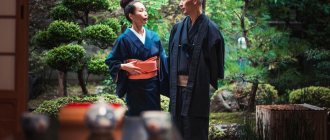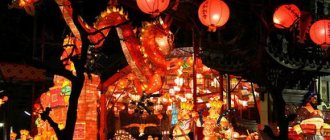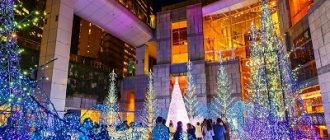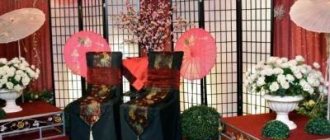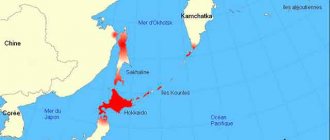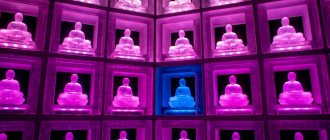Japanese Christmas traditions
For most people in the country, Christmas does not carry any religious content, and its celebration is associated only with the influence of Western culture. This holiday here has a different connotation and is celebrated as a family celebration and a dating day for lovers. Young people traditionally strive to spend it in a romantic setting, for example, having dinner at a hotel. The older generation goes to the theater or restaurant for dinner with live performances by artists. Many express their gratitude and feelings through the exchange of gifts. Christmas is celebrated according to the Catholic calendar. It is customary to serve a sponge cake decorated with white cream and strawberries.
Japanese New Year traditions
One of the most beloved and most important holidays in the country is O-shogatsu, as the New Year is called in the country. New Year's traditions among the Japanese are as unshakable and respected as following other national customs. Many of them have something in common with European ones, for example, summing up and distributing debts. But, if in Europe many approach this formally, then in the Land of the Rising Sun every ritual is performed in all seriousness.
Celebrations begin on December 29 and continue until January 3 of the coming year. Almost all government and commercial enterprises are closed for this period, this is a time of mass vacations. The Japanese also have their own Santa Claus named Segatsu-san, he performs the same functions as any other New Year's symbolic character - he gives gifts and amuses the people, first of all, of course, children.
The Japanese have many New Year traditions; we will describe them briefly.
Send a nengajo postcard
Sending out postcards with the symbol of the coming year is perhaps the most important and integral ritual of the upcoming holiday. They are sent to everyone they can - relatives, friends, classmates, colleagues, and just acquaintances. If a nengajo postcard was sent to or received from a person, this must be done every subsequent year. Nengajō can be purchased ready-made, but many people prefer the traditional old method of writing with ink and a brush.
Clap your hands
Those who have the opportunity go to the sea or to the mountains on New Year's Eve - where they can see the rising sun earlier. With its first rays, people clap their hands, symbolically rejoicing at the new prospects that are opening up.
Hang a cake on a bouquet
Traditional mochi cakes, baked from rice flour, and rice cookies in the shape of figurines of flowers, animals, birds or fish are traditionally hung on willow or bamboo branches collected in a bouquet. This composition is called mitibana. It is installed in such a place that it is clearly visible from the threshold, and it is intended for the deity Toshigama to appease him and ask him to take care of the house next year.
Decorate the rake
A Russian person, seeing rakes decorated for the New Year, would think that people want to not step on them again in the coming year, but the Japanese have a different symbolism - they want to rake in happiness with them. And the size of the “kumade”, as these festive rakes are called, can be very different - from 10 cm to the usual 1.5 m. Symbolic drawings are applied to them and talismans are hung.
Ring the bell 108 times
Instead of chimes, residents of the Land of the Rising Sun listen to 108 bells ringing at midnight from local Buddhist temples. It is believed that a person is haunted by just such a number of addictions, and that the sound of a bell can drive them all away. You should not just listen to the beats, but count them so as not to miss the last one and laugh at that very moment. In this case, the next 365 days will be filled with joy.
Wait until dawn
Even those who do not go to the mountains or to the sea to see the sunrise try not to go to bed without seeing it. The first sunrise is called hatsuhi, and its meeting is considered very important for future well-being.
Collect the treats correctly
There can be a lot of different dishes on the festive table, but several of them are considered mandatory and carry certain symbols. This is rice, symbolizing the future prosperity of the house, buckwheat noodles, representing longevity, carp, as a guarantee of physical strength, chestnuts for good luck and beans, which should bring good health to family members. A lotus root cut crosswise is also placed on the table; this figure symbolizes the wheel of life.
